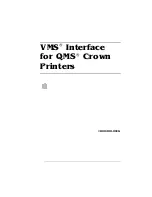
Crestron
e-Control
®
Software
The private network addresses are as follows:
•
Range 1: Class A
- 10.0.0.0 through 10.255.255.255
•
Range 2: Class B
- 172.16.0.0 through 172.31.255.255
•
Range 3: Class C
- 192.168.0.0 through 192.168.255.255
You are not required to use any particular range when you set up an internal network.
However, Crestron recommends using the private network addresses for e-Control
equipment on an internal LAN, because they greatly reduce the chance of an IP
address conflict.
Another reserved IP address is 127.0.0.1, or
localhost
. This special address is also
referred to as a
loopback
address and represents the same computer or device on
which a TCP/IP message originates. Data going to 127.0.0.1 does not actually go out
to the Internet.
Default Gateway
A
default gateway
is a router that links a subnet, or internal LAN, to outside
networks.
When a device attempts to communicate with another device on the same
internal LAN, the data is simply transferred on the local subnet. However, if the
destination is a remote device, then the data has to be forwarded to the default
gateway. It is then the responsibility of the router to forward the data to the correct
subnet.
In cases where data will not be routed outside the internal LAN, the default gateway
address can be set to 0.0.0.0. Otherwise, you would specify the internal LAN address
of the router.
Static and Dynamic IP Addressing
Static and dynamic IP addressing are two different methods of assigning an IP
address to a device.
A static IP address
is a fixed IP address that you assign manually to a computer or
network device. It remains valid until it is disabled; static IP addressing thus ensures
that a device will always have the same IP address until it is changed to a different
value.
Crestron’s X-Series control systems and CEN devices require static IP addressing for
use in e-Control.
In contrast, a dynamic IP address
is automatically assigned to a device on the
network. These IP addresses are called “dynamic” because they are only temporarily
assigned, or leased, to the device. After a certain time they expire and may change.
When a device connects to the network (or the Internet) and its dynamic IP address
has expired, the DHCP
(
D
ynamic
H
ost
C
onfiguration
P
rotocol)
server
will assign it a
new dynamic IP address.
The purpose of DHCP is to let network administrators centrally manage and
automate the assignment of IP addresses in an organization’s network. DHCP greatly
reduces the work necessary to administer a large IP network. Without DHCP, the
administrator has to manually configure the IP address each time a computer is added
to the network or moves to a different location.
Reference Guide – DOC. 6052
Crestron e-Control®
•
9
Содержание e-Control
Страница 1: ...Crestron e Control Reference Guide...
Страница 62: ...Software Crestron e Control 58 Crestron e Control Reference Guide DOC 6052...
Страница 63: ...Crestron e Control Software Reference Guide DOC 6052 Crestron e Control 59...
Страница 71: ...Crestron e Control Software This page intentionally left blank Reference Guide DOC 6052 Crestron e Control 67...
Страница 72: ......
Страница 73: ...Crestron e Control Software This page intentionally left blank Reference Guide DOC 6052 Crestron e Control 69...














































